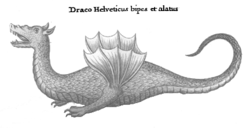Nowe Ateny


Nowe Ateny (New Athens) is the abbreviated title of the first Polish-language encyclopedia, authored by the 18th century Polish priest Benedykt Joachim Chmielowski. The first edition was published in 1745–1746 in Lwów (Lviv); the second edition, updated and expanded, in 1754–1764.
The first part of the full title was: New Athens or the Academy full of all science, divided into subjects and classes, for the wise ones to record, for the idiots to learn, for the politicians to practice, for the melancholics to entertain issued... (pl:Nowe Ateny albo Akademia wszelkiej sciencyi pełna, na różne tytuły jak na classes podzielona, mądrym dla memoryału, idiotom dla nauki, politykom dla praktyki, melancholikom dla rozrywki erigowana...).
Organization and content
The first edition of the encyclopedia contains 938 pages. It has a subject (not alphabetic) organization. Chmielowski compiled data from a few hundred references, dating from antiquity to his contemporary.
Almost every sentence in the book is in-line referenced, frequently in Latin, a lingua franca in Poland among the educated classes as in most of Central and Western Europe of the 18th century. To the data from more than a hundred original authors, Chmielowski added personal annotations, for example, "Dragons existed for sure, I myself held, visiting Radziwills' castle, a rib of a dragon bigger than a regular sabre". Judging from the inclusion of numerous stories, anecdotes, and description of strange phenomena and exotic countries (like China, Japan), the encyclopedia was directed towards a rather popular audience and aimed to arouse readers' curiosity and desire for learning.
Legacy
The encyclopedia was the object of harsh critique in the Enlightenment period. It was given as an example of ignorance, stupidity and superstition, contrasting with the enlightenment ideas.
Nowe Ateny is the source of a few memorable and amusing "definitions", often quoted in Poland to this day:
- Horse is as everyone can see.
- Goats are a stinking kind of animal.
The humor was probably unintentional by the author. Rather, he did not see the benefit of defining for his intended audience the most common animals of the time and place.
In modern Polish, the above definition of the horse is sometimes used as a colorful equivalent of the statement "the concept is more obvious than it appears to be from its more technical definition".
However, since the few decades opinions about Nowe Ateny have changed for much positive. It has to be noticed, that quotations mentioned above were just a fragments taken from broad context - for example Chmielowski has written more than 15 pages about the horses in his monumental, 3000 pages long encyclopedia (four volumes).[1][2][3]
According to Wojciech Paszyński the black legend about Nowe Ateny has survived until these days, even in the academic circles. Attempts have been made in order to overcome, at least partially, some of the prejudices and misconceptions that have been accumulated around Nowe Ateny for the last two centuries. Even though the encyclopedia is not particularly innovative in the context of European learning at that time, one cannot simply regard it as an example of obscurantism. The book represents a typical scientific approach characteristic of the pre-Enlightenment period. Chmielowski himself was far from being a noncritical compiler; he was rather a creative author who pioneered in quite a few forms of contemporary journalism. It certainly cannot be denied that he had a great erudition and a talent for writing. The authors to whom he referred were not, as it was commonly believed, medieval authors, but they belonged to the scientific elite of the 16th and 17th centuries. The reverend has numerous merits such as: providing the first compilation of dates and events in the Polish history as well as presenting valuable information about libraries and academies of that time. One should also notice Chmielowski’s empirical approach in the process of proving numerous theories. The author’s original style of writing also attracts the reader’s attention. Although numerous attempts have been made in order to rehabilitate the encyclopedia, it is still associated with negative judgements, also in the serious literature of the subject. Today the encyclopedia remains in the first place the symbol of ignorance of the Saxon times in Poland (rule of Wettin dynasty).[4][5][6][7]
External links
- Text (Polish)
- Scanned text (Polish)
- New Athens by Reverend Benedykt Chmielowski – its Black Legend and a Possible Line of Defence (Polish) (English)
Bibliography
- Wojciech Paszyński, Ksiądz Benedykt Chmielowski – życie i dzieło Diogenesa firlejowskiego, „Nasza Przeszłość” 2015/2, t. 124, s. 105-136.
- Wojciech Paszyński, Czarna legenda „Nowych Aten” Benedykta Chmielowskiego i próby jej przezwyciężenia, „Zeszyty Naukowe Uniwersytetu Jagiellońskiego. Prace Historyczne” 2014/1(141), s. 37-59.
References
- ↑ http://www.ejournals.eu/Prace-Historyczne/2014/Numer-1/art/3312
- ↑ http://www.ceeol.com/search/article-detail?id=146194
- ↑ http://www.ejournals.eu/sj/index.php/PH/article/view/4881
- ↑ http://www.ejournals.eu/Prace-Historyczne/2014/Numer-1/art/3312
- ↑ http://www.ceeol.com/search/article-detail?id=146194
- ↑ http://naszaprzeszlosc.pl/?tom-124,50
- ↑ http://www.ejournals.eu/sj/index.php/PH/article/view/4881
